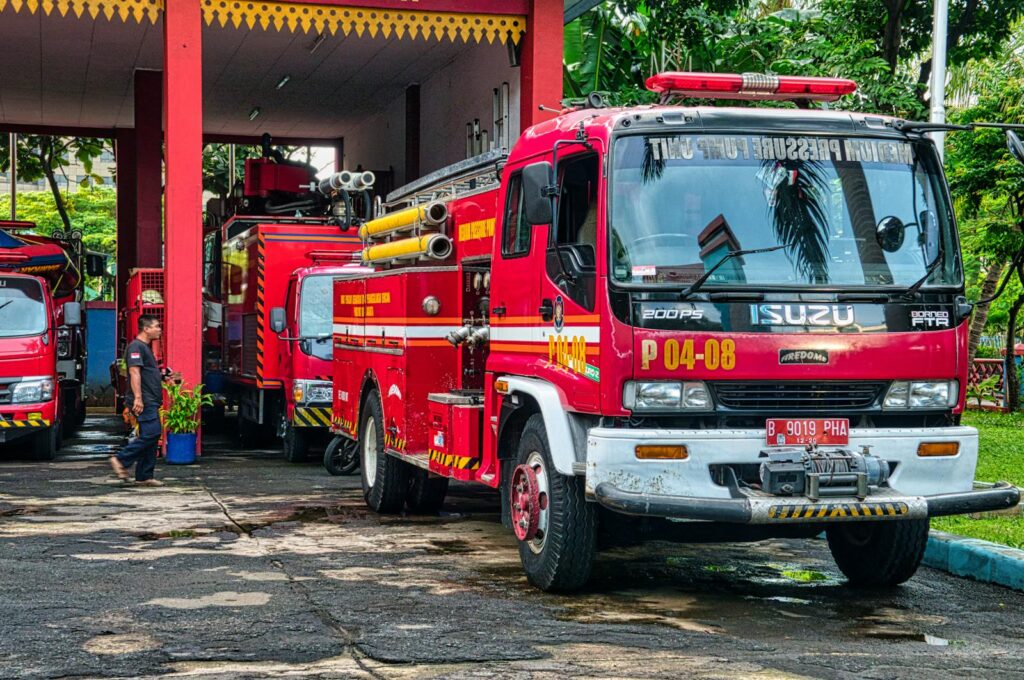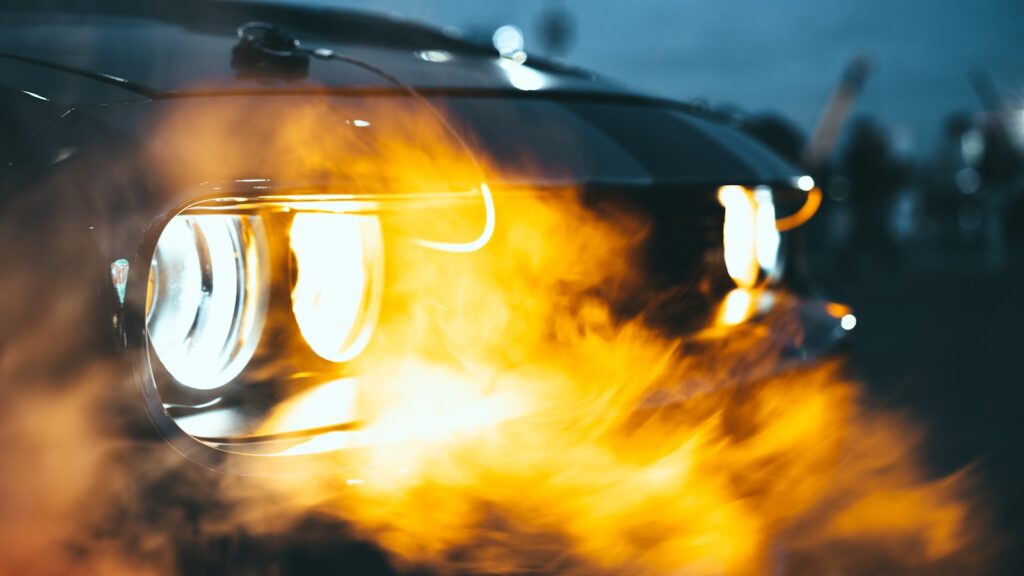Vehicle fires are a serious hazard on the road, posing risks of damage and harm to occupants, nearby individuals, and properties. They are unfortunately common, with statistics showing that in the United States alone, more than 19 vehicle fires occur every hour, accounting for one-eighth of the calls received by fire departments. These incidents result in approximately seven fatalities per week and injure an additional 1,300 individuals annually, causing an estimated $1.1 billion in property damage.
It is crucial to understand that vehicle fires rarely have a single cause. Instead, they usually result from a combination of human, mechanical, and chemical factors that together create a hazardous condition. While some vehicle fires occur due to accidents, others can be attributed to various mechanical, electrical, or human factors. These fires are typically rapid and destructive, leaving occupants with limited time to escape.
Often, the focus of vehicle fire prevention gravitates towards engine-related issues. However, many significant fire hazards lurk outside the engine’s core operations, stemming from various components and circumstances throughout the vehicle. Empowering vehicle owners and operators with knowledge about these non-engine related causes is vital for making smart choices, highlighting potential pitfalls, and enhancing overall safety. Let’s delve into these critical, often overlooked, ignition sources to minimize risk on the road.
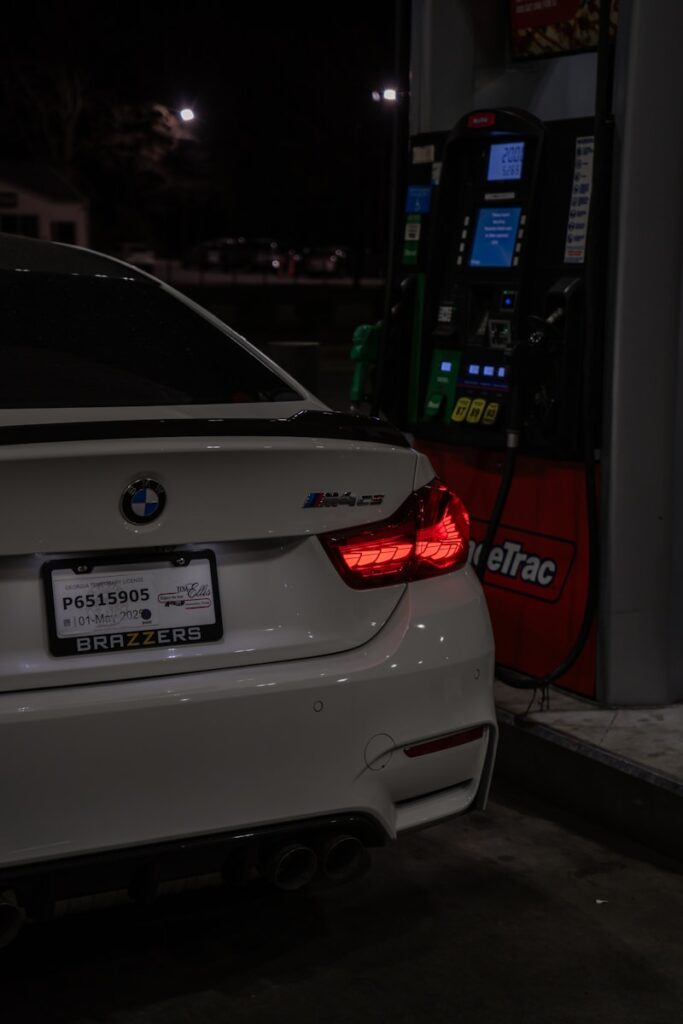
1. **Fuel Leaks**Fuel leaks in vehicles present an exceptionally serious fire risk, as they can release highly flammable liquids that easily ignite in the presence of heat sources. The fuel system, a well-orchestrated assembly of components, is meticulously designed to deliver gasoline or diesel from the tank to the engine efficiently. However, leaks within this system, such as from leaking fuel lines or ruptured fuel tanks, act as ticking time bombs within the vehicle.
Leaks often result from wear and tear, manifesting in the form of deteriorated fuel lines, compromised seals, or damaged components. Even a small leak can pose a significant danger, especially if it occurs near hot vehicle components, exhaust systems, or electrical sparks. The perilous nature of fuel, which can ignite at temperatures as low as 7.2 degrees Celsius from a spark and combust spontaneously at 257 degrees, makes any leakage situation particularly dangerous.
Prompt detection and repair of fuel leaks are essential to prevent fires. Drivers should be vigilant for signs of fuel odor or visible leaks underneath the vehicle. Regular maintenance is imperative to identify and address deteriorated fuel lines and damaged parts that could be potential sources of leaks. In addition, manufacturers employ safety measures such as fuel line shutoff valves or reinforced fuel tank designs to mitigate the risk of fires in the event of a leak. When you perceive the distinctive scent of gasoline or diesel, it’s a clear red flag that warrants immediate professional inspection.
Read more about: 14 Critical Dashboard Warnings You Should Never Ignore: A Popular Mechanics Guide
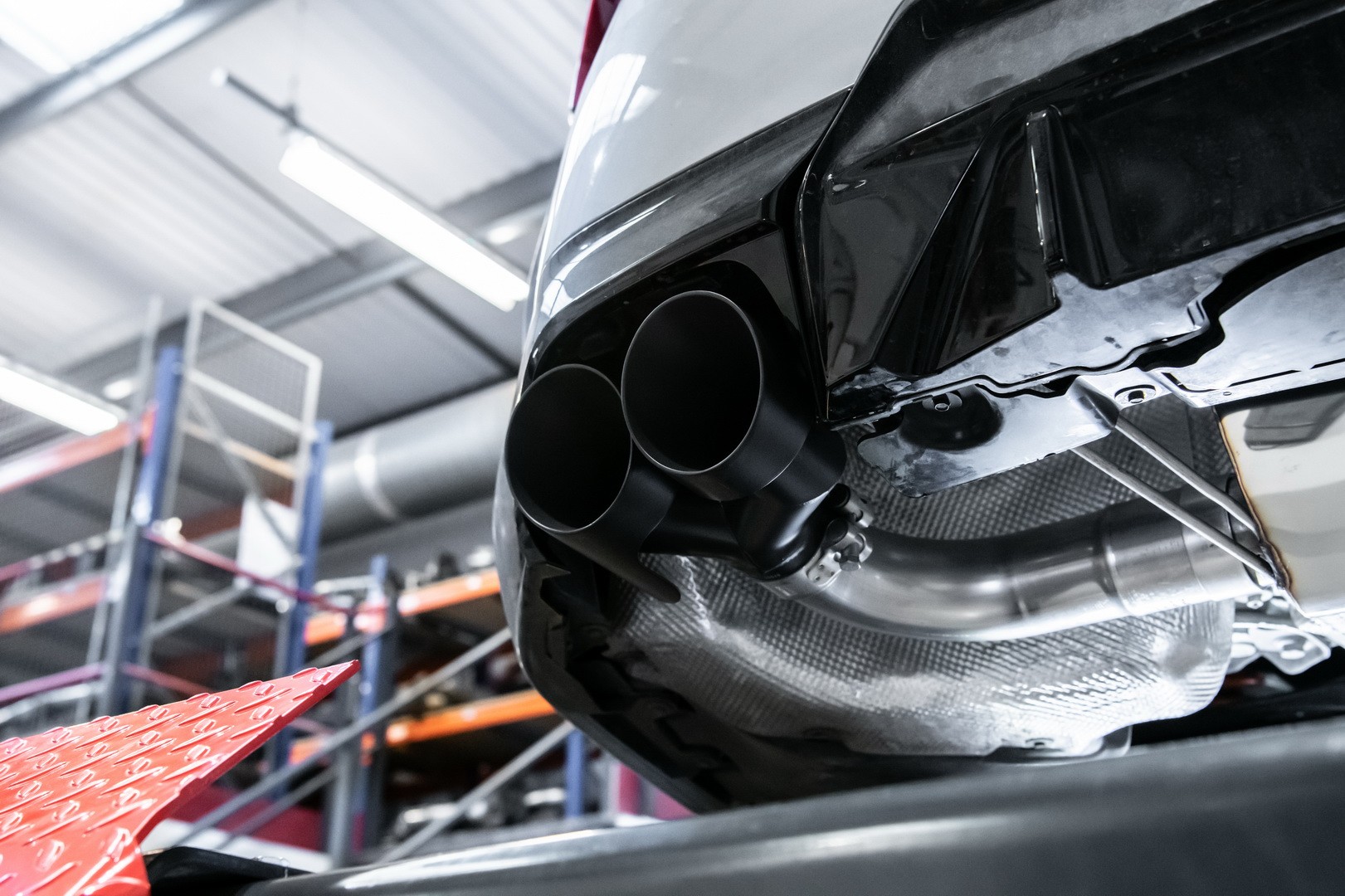
2. **Exhaust System Issues**Issues with the exhaust system, while connected to the engine’s operation, can pose a fire risk independently of internal engine malfunctions, particularly if hot exhaust components come into contact with combustible materials. The exhaust system, including components like the catalytic converter, operates at extremely high temperatures as it processes gases from the engine to reduce emissions. This heat becomes a significant hazard if not properly contained or managed.
A damaged catalytic converter, for example, can reach extremely high temperatures during operation, even glowing red-hot. If nearby materials such as dry grass or leaves come into contact with the hot converter, they can ignite, leading to a rapid and destructive fire. This risk is particularly acute when parking over dry vegetation or after prolonged driving, which can cause the converter to reach peak temperatures.
Moreover, leaks or cracks in the exhaust system can release hot gases or sparks, increasing the risk of ignition. These hot emissions, escaping where they shouldn’t, can quickly ignite fluids, debris, or insulation within the vehicle’s undercarriage or surrounding environment. Regular inspections of the exhaust system, including checking for leaks or damage to components like mufflers, pipes, and the catalytic converter, are vital to identify potential hazards and prevent these fires.
Read more about: 14 Critical Dashboard Warnings You Should Never Ignore: A Popular Mechanics Guide

3. **Battery Fires**With the increasing prevalence of hybrid and electric vehicles (EVs), battery fires have emerged as a significant, albeit new-age, risk. Lithium-ion batteries used in these vehicles can pose a fire hazard due to a phenomenon known as thermal runaway. This occurs when the battery’s temperature increases uncontrollably, leading to the ignition of flammable electrolytes or other battery components. It’s a chain reaction where one cell’s failure escalates to others.
Thermal runaway can be triggered by several factors, including internal defects within the battery pack, overcharging due to faulty charging systems, physical damage sustained in a collision, or exposure to dangerously high external temperatures. For instance, if a damaged lithium-ion battery is punctured or crushed during an accident, it can release flammable electrolytes and generate intense heat, potentially resulting in a fire that is difficult to extinguish due to its chemical nature.
Despite sophisticated design and rigorous testing, these high-voltage battery packs are not immune to fire risks. Manufacturers continually work to mitigate these risks through engineering and recall initiatives when necessary. For vehicle owners, understanding the unique characteristics of EV and hybrid battery systems, responding promptly to any manufacturer recalls, and ensuring any damage to the battery pack is professionally inspected and repaired are crucial steps in prevention.
Read more about: Roadside Ready: 14 Essential Tools Every Driver Needs in Their Trunk for Unexpected Emergencies

4. **Improper Loading or Transport of Cargo**Improper loading or transport of cargo in vehicles can create conditions that significantly increase the risk of fires, often due to preventable human error or oversight. This cause is entirely unrelated to the mechanical or electrical function of the vehicle itself but is a direct result of how materials are stored and secured within it. The seemingly innocuous act of carrying certain items can turn into a critical hazard under the right circumstances.
For example, if flammable materials such as gasoline cans, propane tanks, or even certain chemicals are not properly secured or stored upright, they can tip over and leak. This leakage creates an immediate and potent ignition source within the vehicle’s confined space, especially if these fluids come into contact with any heat source or spark. The vapors alone from spilled flammable liquids can be highly combustible.
Similarly, if heavy or abrasive cargo shifts during transit, it can damage critical vehicle components. This damage might include crushing or abrading electrical wiring, puncturing fuel lines, or rupturing fluid reservoirs, all of which can increase the risk of electrical faults, short circuits, or further fluid leaks. Drivers should always follow proper loading and securing procedures, including using appropriate restraints and cargo nets, to prevent shifting or spillage of materials that could pose a fire hazard.
Read more about: The 13 Most Common Causes of Car Fires That Mechanics Want You to Know to Keep You Safe
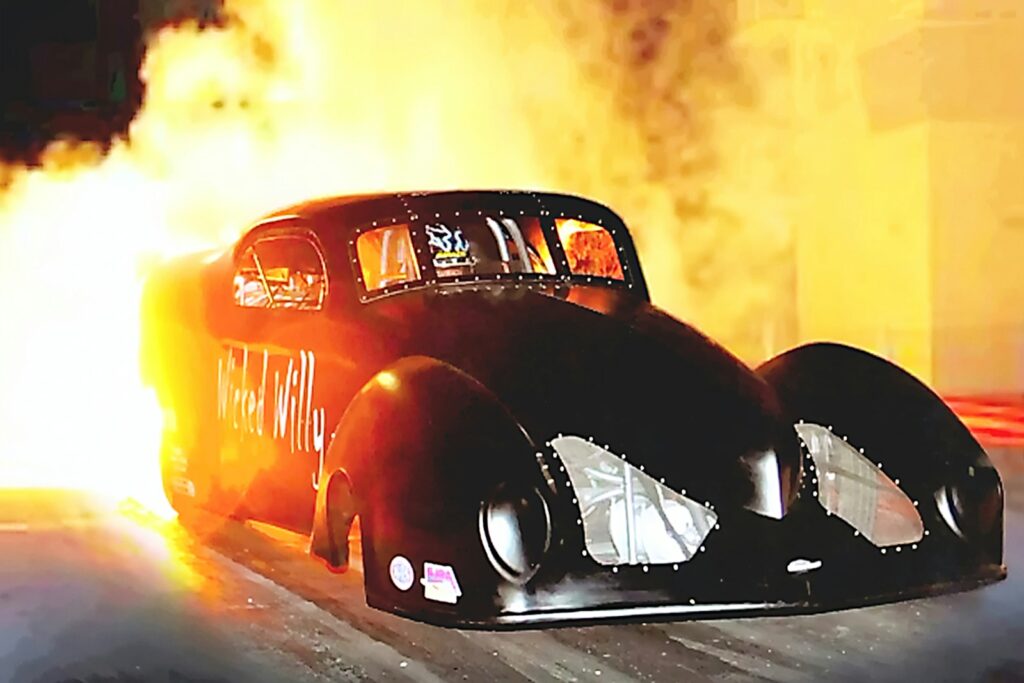
5. **Sparks from Moving Parts**The friction generated by various moving parts within the vehicle, beyond the engine’s core components, can produce sparks under certain conditions, which may ignite nearby flammable materials. While often associated with mechanical issues, these sparks can originate from a range of non-engine systems, emphasizing the need for comprehensive vehicle awareness. These moving parts are essential for the vehicle’s operation, but their malfunction can create dangerous heat and sparks.
Components such as wheel bearings, brake mechanisms, or elements within the drivetrain (like universal joints or driveshafts) can generate significant friction and heat if they are worn out, improperly lubricated, or damaged. This friction can lead to intensely hot spots or even visible sparks. If these sparks come into contact with accumulated road debris, dry leaves, leaked fluids, or even insulation, ignition can occur.
Additionally, loose or improperly installed components, such as heat shields designed to protect against high temperatures or exhaust brackets that have come undone, can come into contact with moving parts. This contact can lead to excessive friction, wear, and potential ignition sources. Regular inspection and maintenance of these non-engine moving parts, including lubrication and replacement of worn components, are crucial to prevent friction-induced sparks and the subsequent risk of fire.
Read more about: 14 Critical Dashboard Warnings You Should Never Ignore: A Popular Mechanics Guide
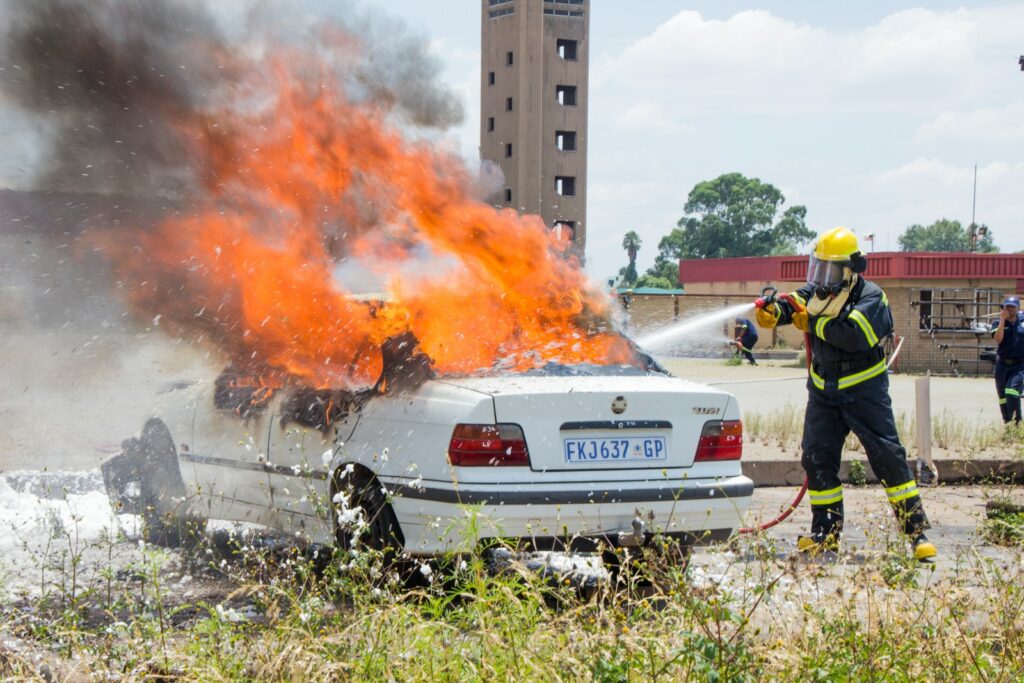
6. **Electrical Malfunctions**Electrical malfunctions in vehicles represent a pervasive and significant fire hazard, extending far beyond just the engine compartment. The entire vehicle, including the cabin area, is intricately threaded with extensive wiring systems essential for various functions, from infotainment to power windows and safety features. Any compromise within this complex network can generate dangerous sparks or excessive heat, leading to fire.
Short circuits, which occur when electrical currents bypass their intended path, are a primary concern. This can happen due to damaged wiring insulation, often from wear and tear, animal chewing, or improper installation of components. Corroded connectors, which impede proper current flow and generate resistance, or overloaded circuits, perhaps from aftermarket accessories drawing too much power, can also lead to dangerous heat buildup or sparking. For instance, if an exposed wire comes into contact with a metal surface, it can create a spark that ignites nearby flammable materials.
Furthermore, malfunctioning electrical components, such as faulty alternators or ignition switches (not directly the engine’s internal function, but part of its electrical support), can also lead to electrical fires if they produce excessive heat during operation. Even conventional car batteries, particularly during charging cycles, generate hydrogen gas, which is notoriously explosive when ignited by a spark. Hence, regular checks and maintenance of a car’s electrical system are non-negotiable for safety-conscious drivers, and proper maintenance and timely repairs are crucial to prevent these malfunctions from escalating into serious safety hazards. Inspections by qualified technicians can help identify and address potential issues before they escalate.
Continuing our exploration into the myriad causes of vehicle fires that extend beyond the engine’s core, we now turn our attention to additional, often overlooked, ignition sources. Understanding these diverse factors is paramount for vehicle owners seeking to proactively minimize risks and enhance overall vehicle safety. The following insights offer practical, actionable advice to empower consumers against potential fire hazards.
Read more about: 14 Critical Dashboard Warnings You Should Never Ignore: A Popular Mechanics Guide
7. **Spontaneous Combustion**While less frequently discussed than electrical faults or fuel leaks, spontaneous combustion represents a distinct and insidious fire risk within vehicles, stemming entirely from the improper handling or storage of certain materials. This phenomenon occurs when combustible substances generate their own heat through oxidation, eventually reaching ignition temperature without an external spark or flame. It’s a silent threat that emphasizes the importance of vigilance regarding what is stored in your vehicle.
Oily rags, a common item found in many garages and sometimes temporarily stored in vehicles after maintenance, are a prime example. The oil residues on these rags can oxidize over time, slowly generating heat. If these rags are crumpled together, trapping the heat, the internal temperature can rise uncontrollably, leading to self-ignition. Similarly, other organic materials such as sawdust or hay, if left in a vehicle and exposed to moisture or heat, can also pose a spontaneous combustion risk, particularly in enclosed, poorly ventilated spaces.
Preventing spontaneous combustion fires requires a conscious effort in proper storage and disposal practices. It is crucial to immediately and correctly dispose of oily rags in a sealed, non-combustible container after use, rather than leaving them in the vehicle or garage. For any other combustible materials, ensuring they are stored in well-ventilated areas, away from direct sunlight or heat, and never left loosely in a vehicle’s cabin or trunk, is essential.
Read more about: From Street Takeovers to Uninsured Nightmares: The Wildest Automotive Hits You Won’t Believe
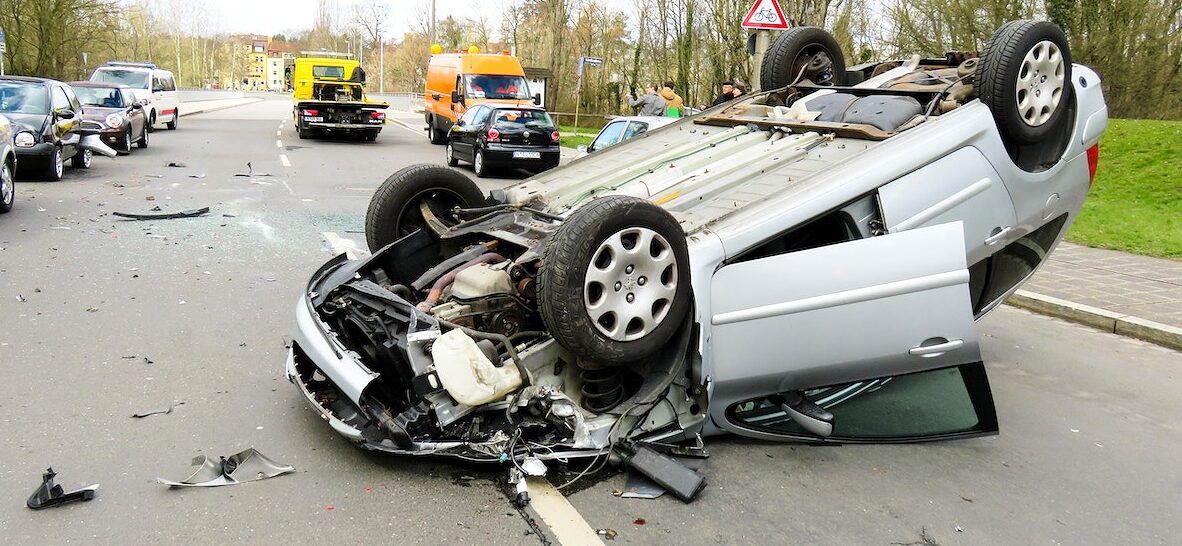
8. **Collision Impacts**Automobile accidents, even those appearing minor, can create immediate and latent dangers that significantly increase the risk of vehicle fires. While modern vehicles incorporate advanced safety features and crumple zones designed to absorb impact energy, a severe collision can compromise these safeguards, leading to a cascade of events that facilitate ignition. The forces involved in an impact can rupture crucial components, creating a highly volatile environment.
One of the most immediate concerns following a collision is the potential for ruptured fuel lines or damaged fuel tanks. The force of impact, particularly in rear-end collisions, can crush the fuel tank or its lines, releasing highly flammable gasoline or diesel. If these fluids come into contact with hot engine components, exhaust systems, or even sparks generated by the impact itself, a rapid and destructive fire can ensue. The design of vehicles aims to prevent this, but severe trauma can overcome these protections.
Furthermore, collisions can severely damage a vehicle’s extensive electrical wiring system. The impact can cause wires to fray, insulation to break, or connectors to loosen, leading to short circuits. These electrical faults can generate sparks capable of igniting spilled fluids, upholstery, or other flammable materials within the vehicle. Therefore, following any significant accident, it is imperative for occupants to evacuate the vehicle quickly and move to a safe distance, as the risk of fire can be immediate or develop shortly after the initial impact.
Read more about: 14 Critical Dashboard Warnings You Should Never Ignore: A Popular Mechanics Guide
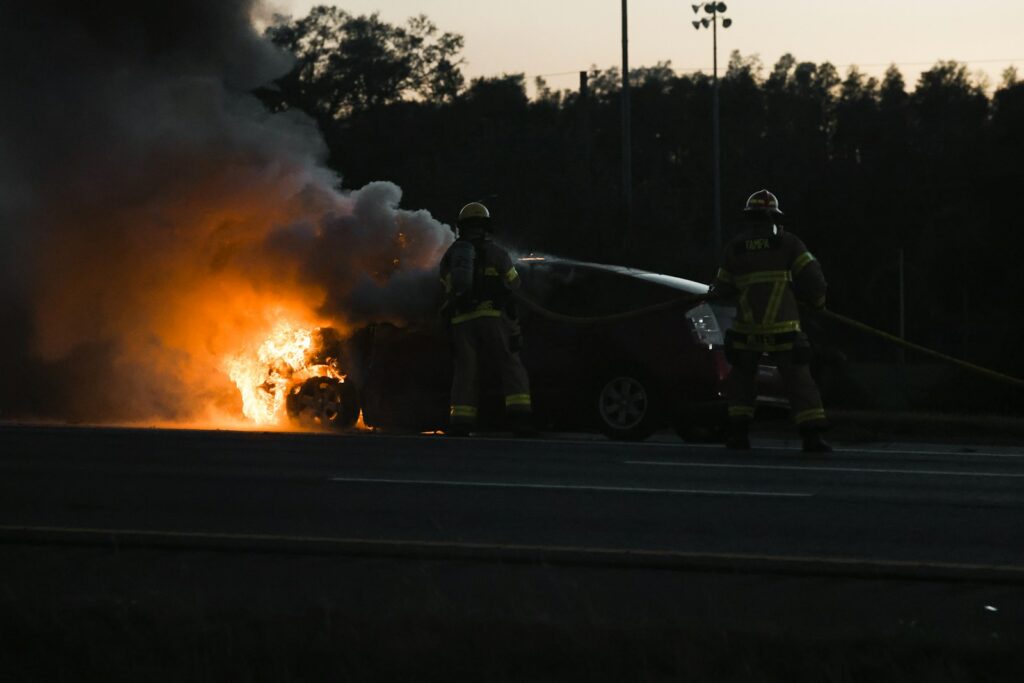
9. **Brake System Malfunctions**The braking system, critical for vehicle control and safety, can also become an unexpected source of fire if components malfunction or are poorly maintained. The intense friction generated during braking produces significant heat, and under specific conditions, this heat can escalate to dangerous levels, leading to the ignition of nearby flammable materials. Understanding these mechanisms is key to preventative action.
Prolonged or heavy braking, such as driving down a steep incline or extended periods of stop-and-go traffic, can cause brake pads and rotors to reach extremely high temperatures. While designed to withstand considerable heat, in severe cases, these temperatures can become high enough to ignite brake dust, accumulated road debris, or even surrounding components and fluids. The risk is further exacerbated by worn-out brake pads or rotors, which can generate even more friction and heat due to inefficient operation.
Beyond excessive heat from friction, mechanical failures within the brake system can also trigger fires. Worn-out or improperly lubricated brake calipers or pistons can seize, causing the brake pads to remain engaged against the rotors. This continuous friction generates intense, uncontrolled heat, which can quickly lead to component overheating and potential ignition. Regular inspection and maintenance of the entire brake system, including checking brake pad thickness, rotor condition, and ensuring proper lubrication of moving parts, are indispensable safety measures to prevent these malfunction-induced fires.
Read more about: 14 Critical Dashboard Warnings You Should Never Ignore: A Popular Mechanics Guide
10. **Aftermarket Accessory Risks**Aftermarket accessories, intended to enhance a vehicle’s functionality, aesthetics, or performance, introduce a unique set of fire risks if not installed correctly or if they are incompatible with the vehicle’s original electrical architecture. While these additions can personalize a vehicle, improper installation practices can inadvertently create dangerous electrical faults that lead to overheating and, ultimately, fires.
Many aftermarket modifications, ranging from sophisticated audio systems and specialized lighting kits to power inverters and alarm systems, draw additional power from the vehicle’s electrical system. If the wiring for these accessories is not properly connected, insulated, or grounded, it can lead to short circuits, excessive current draw, or overloaded circuits. These conditions generate dangerous amounts of heat, capable of melting wire insulation, igniting plastic components, or sparking fires in confined spaces within the vehicle’s dashboard or undercarriage.
The complexity of modern vehicle electrical systems means that DIY installations or reliance on inexperienced technicians can introduce unseen hazards. It is crucial for vehicle owners to select reputable installers who understand vehicle electrical principles and adhere to manufacturer specifications and safety standards. Ensuring that all aftermarket accessories are professionally installed with appropriate fuses, relays, and compatible wiring, and comply with applicable safety regulations, is the most effective way to mitigate the risks of electrical fires originating from these modifications.
Read more about: The AdTech Wreckage: Marin Software’s Wild Ride From Industry Pioneer to Bankruptcy Showdown
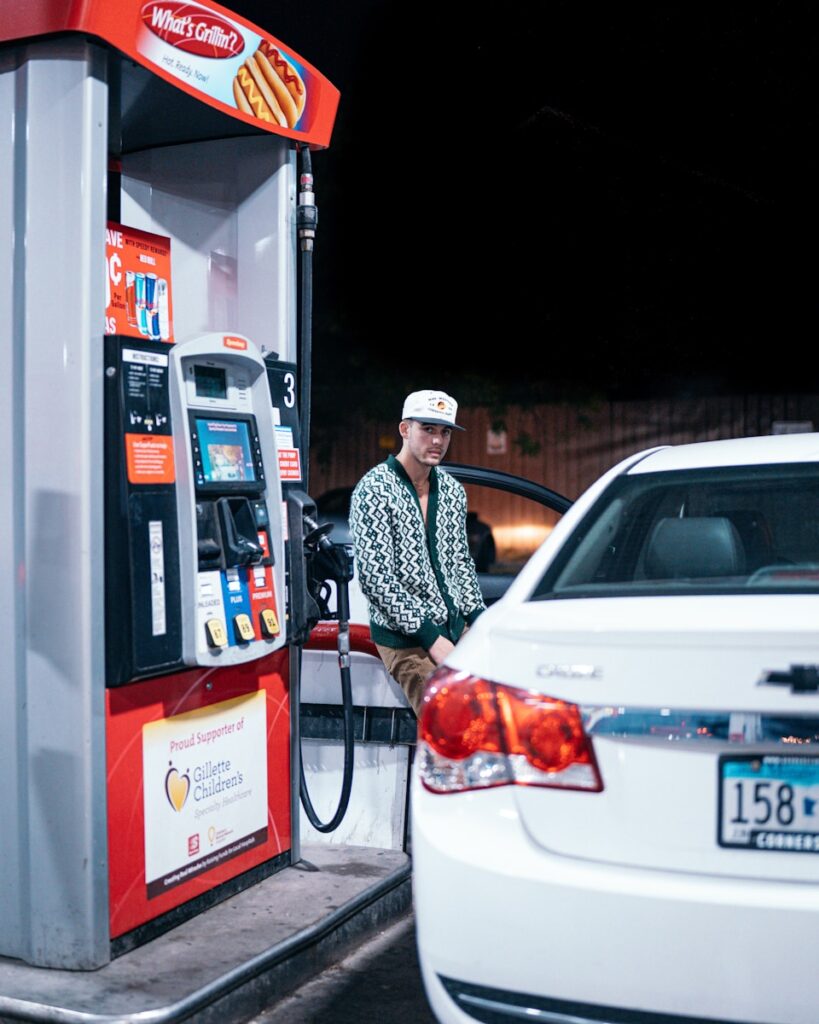
11. **Various Fluid Leaks**While fuel leaks are a widely recognized fire hazard, other vital fluids within a vehicle, such as engine oil, transmission fluid, and brake fluid, also present significant ignition risks if they leak. These fluids are all highly flammable, and their escape from their designated containment systems can create dangerous conditions, particularly when they come into contact with hot vehicle components or electrical sources.
Under the hood or chassis, a variety of seals, gaskets, and hoses are tasked with containing these essential fluids. Over time, these components can deteriorate due to wear, age, or damage, leading to leaks. For instance, a leaking oil pan gasket, a cracked transmission fluid line, or a compromised power steering hose can allow these highly combustible liquids to drip onto exhaust manifolds, catalytic converters, or other extremely hot engine parts. The immediate contact with a high-temperature surface can cause these fluids to ignite, leading to a fire.
Furthermore, brake fluid leaks, especially in close proximity to hot brake components, can vaporize and create flammable fumes that are easily ignited by friction-induced heat or electrical sparks. Prompt detection and repair of any fluid leaks are thus critical. Drivers should remain vigilant for visible puddles beneath their vehicle, unusual odors, or dashboard warning lights. Regular inspections of fluid levels, hoses, and seals during routine maintenance provide an invaluable opportunity to identify and address these potential fire hazards before they escalate into serious safety risks.
Read more about: Don’t Get Scammed: 14 Car Services and Accessories That Are a Total Waste of Your Money

12. **Human Factors like Smoking**Human behavior, often unintentional or negligent, contributes significantly to vehicle fires, with smoking materials being a frequently overlooked but potent ignition source. The act of smoking inside a vehicle, while seemingly innocuous to some, carries an inherent fire risk due to the presence of an open flame and highly combustible materials within the confined cabin environment.
A lit cigarette, if carelessly dropped or improperly extinguished, can swiftly ignite the vehicle’s interior. Upholstery, carpets, floor mats, or even stray papers and tissues are all highly flammable and can catch fire rapidly. In instances where a lit cigarette is discarded out of a window, air currents can sometimes cause the ember to re-enter the cabin, potentially sparking a fire on the back seat or floor without the driver’s immediate awareness. This scenario underscores the unpredictable nature of open flames within a vehicle.
The presence of the vehicle’s ventilation system can exacerbate the danger by distributing smoldering embers throughout the interior, accelerating the spread of a nascent fire. To prevent fires caused by smoking materials, the most effective measure is to refrain from smoking inside vehicles altogether. For those who must smoke, extreme caution is advised, ensuring that cigarettes are fully extinguished and disposed of in designated, non-combustible ashtrays or receptacles, never thrown carelessly.
Read more about: Diane Keaton: Her Final Days, Cause of Death, and a Look Back at a Remarkable Life at 79
Understanding these additional, often overlooked, non-engine related causes of vehicle fires is a critical component of comprehensive fire prevention. By combining this knowledge with diligent maintenance practices, prompt responses to issues, and responsible operational habits, vehicle owners can significantly reduce their risk of experiencing a devastating vehicle fire. Prioritizing safety through awareness and proactive measures remains the most effective strategy for protecting lives and property on the road. The complexity of vehicle fires underscores the importance of every preventative step a driver can take.” , “_words_section2”: “1940


